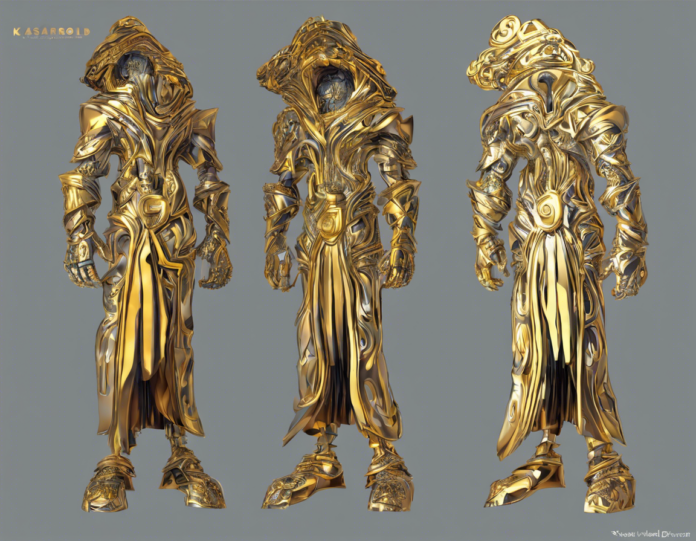In the realm of architectural design, the incorporation of metal components is an art form that can elevate a structure to new heights of elegance and sophistication. Kasargod castings, originating from the picturesque region of Kasargod in the southern Indian state of Kerala, have been revered for centuries for their exquisite craftsmanship and intricate designs. These castings, often made from a unique blend of bell metal, copper, and traditional alloys, serve as not only structural elements but also as stunning decorative pieces that add a touch of opulence to any space. In this article, we delve into the world of Kasargod castings, exploring their history, craftsmanship, applications, and the timeless allure they bring to architectural projects.
The History of Kasargod Castings
Kasargod, known for its rich cultural heritage and skilled artisans, has been a hub for metal casting for generations. The art of metalworking in this region can be traced back to ancient times when craftsmen honed their skills in creating intricate metal artefacts, including temple bells, utensils, and decorative items. Over the years, the expertise in metal casting has been passed down from one generation to the next, preserving the traditional techniques and designs that make Kasargod castings truly unique.
Craftsmanship and Techniques
The process of creating Kasargod castings is a labor-intensive craft that requires a high level of skill and precision. Artisans begin by melting the metal alloys in a furnace, carefully controlling the temperature to achieve the desired consistency. The molten metal is then poured into intricate molds, often made of clay, that have been crafted by skilled sculptors. Once the metal has cooled and solidified, the casting is removed from the mold and meticulously finished by hand, with artisans adding details and embellishments that enhance the beauty of the piece.
Applications in Architecture
Kasargod castings have found a prominent place in the world of architecture, where they are used to adorn doors, windows, ceilings, and other structural elements. These castings can range from simple, geometric patterns to elaborate motifs inspired by nature, mythology, and traditional symbols. Whether adorning a grand entrance or adding a touch of elegance to a ceiling, Kasargod castings bring a sense of artistry and heritage to architectural designs.
Why Choose Kasargod Castings?
The allure of Kasargod castings lies in their timeless appeal and artistic value. Unlike mass-produced metalwork, Kasargod castings are handcrafted by skilled artisans who infuse each piece with their expertise and creativity. The intricate designs and attention to detail set Kasargod castings apart, making them a prized addition to any architectural project seeking to make a statement.
Maintenance and Care
To preserve the beauty of Kasargod castings, proper maintenance is essential. Regular cleaning with a soft cloth and mild detergent can help remove dust and maintain the shine of the metal. Avoid abrasive cleaners or harsh chemicals that can damage the finish. Periodic inspections for signs of wear or corrosion are also recommended to address any issues before they escalate.
FAQs about Kasargod Castings:
1. What materials are used in Kasargod castings?
– Kasargod castings are typically made from a blend of bell metal, copper, and traditional alloys that give them their distinct appearance and durability.
2. Can Kasargod castings be customized according to specific designs?
– Yes, artisans skilled in Kasargod casting techniques can create custom pieces based on specific designs or requirements.
3. Are Kasargod castings suitable for both interior and exterior applications?
– Yes, Kasargod castings are versatile and can be used in both interior and exterior architectural projects.
4. How can one identify authentic Kasargod castings?
– Authentic Kasargod castings often bear distinct markings or signatures from the artisans who crafted them. Additionally, the quality of craftsmanship and intricate details are telltale signs of authenticity.
5. Are Kasargod castings expensive compared to other metalwork options?
– While Kasargod castings may be more costly due to the labor-intensive process and skilled craftsmanship involved, their unique beauty and timeless appeal make them a worthwhile investment for architectural projects.
In conclusion, Kasargod castings embody the exquisite artistry and cultural heritage of a region known for its skilled artisans and traditional craftsmanship. From intricate designs to timeless appeal, these castings have captured the admiration of architects, designers, and enthusiasts alike. By incorporating Kasargod castings into architectural projects, one not only enhances the visual appeal of a space but also celebrates a centuries-old tradition of metalworking at its finest.

